British Defense Secretary Liam Fox called Afghanistan “a broken 13th-century country” when he visited it. His words drew fire on him. This happened not because he was wrong, but because he was way too blunt. Actually, Liam Fox wasn’t the first person to call Afghanistan a medieval country. There were people who labeled local inhabitants “barbarians with a 1200 A.D. mentality”. Many people really think that Afghanistan is an ungovernable land with chaos that would never make it out of the Middle Ages.
Still there were times when Afghanistan was a nice country where women could pursue careers in medicine, where people could go to the movies and work on the factories. This country used to produce many goods. It had a government that was able to undertake national infrastructure projects. People believed they had a future, but all their hopes were destroyed by 30 years of war.
Original caption: "Kabul University students changing classes. Enrollment has doubled in last four years."
The physical campus of Kabul University, pictured here, does not look very different today. But the people do. In the 1950s and '60s, students wore Western-style clothing; young men and women interacted relatively freely. Today, women cover their heads and much of their bodies, even in Kabul. A half-century later, men and women inhabit much more separate worlds.
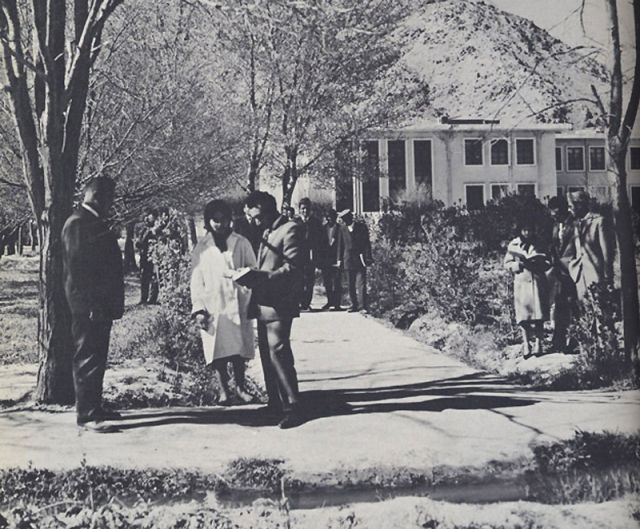
"Biology class, Kabul University."
In the 1950s and '60s, women were able to pursue professional careers in fields such as medicine. Today, schools that educate women are a target for violence, even more so than five or six years ago.

"Student nurses at Maternity Hospital, Kabul."
When I was growing up, education was valued and viewed as the great equalizer. If you went to school and achieved good grades, you'd have the chance to enter college, maybe study abroad, be part of the middle class, and enjoy a comfortable lifestyle. Education was a hallowed value. Today, I think people have become far more cynical. They do not see the link between education and a better life; they see instead that those who have accumulated wealth and power have not done so through legitimate means.
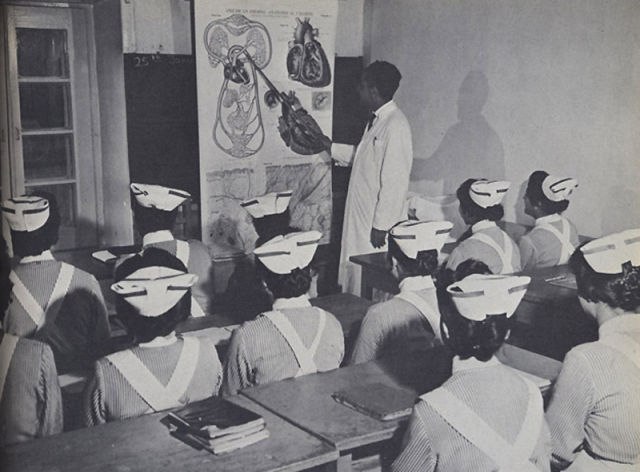
"Most hospitals give extensive post-natal care to young mothers."
This infant ward in a Kabul hospital in the 1960s contrasts sharply with one I visited in 2004 in Mazar-e-Sharif. There I found two babies born prematurely sharing the same incubator. That hospital, like many in Afghanistan today, did not have enough equipment.
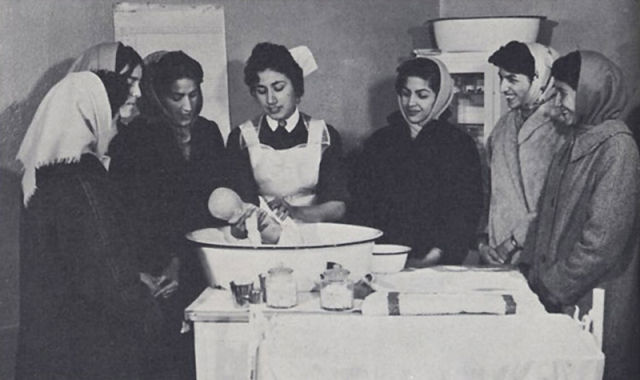
"Infant ward at feeding time."
In the 1960s, about half of Afghanistan's people had access to some level of medical care; now a much smaller percentage do. Today's hospitals are crowded, the facilities limited; nearly one in four babies born in Afghanistan today does not reach its fifth birthday.
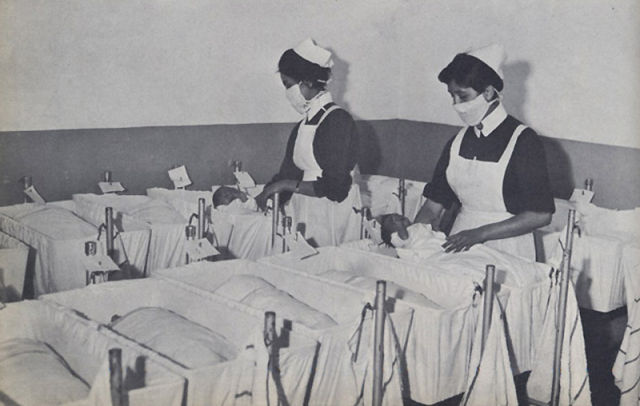
"A laboratory at the Vaccine Research Center."
Above is a vaccine research center attached to a Kabul hospital in the 1960s. Today, medical care across the country is limited by several factors, including lack of electricity. Less than 20 percent of Afghans have access to electricity; many homes are lit by kerosene lamps, with only fans running to combat the heat.
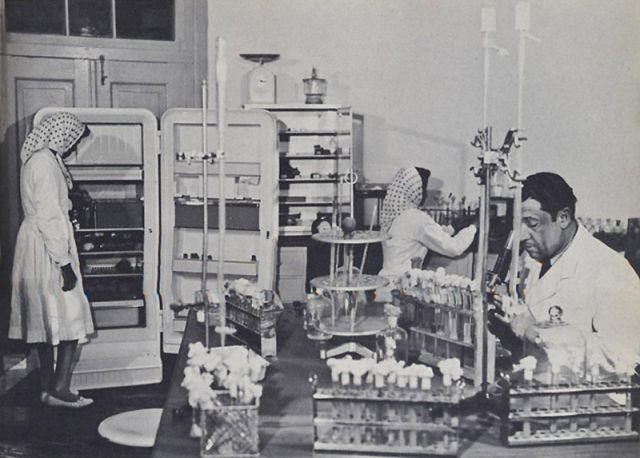
"A villager welcomes visiting nurses to his compound."
The central government of Afghanistan once oversaw various rural development programs, including one, pictured here, that sent nurses in jeeps to remote villages to inoculate residents from such diseases as cholera. Now, security concerns alone make such an effort nearly impossible. Government nurses, as well as U.N. and NGO medical workers, are regular targets for insurgent groups that merely want to create disorder and terror in society.
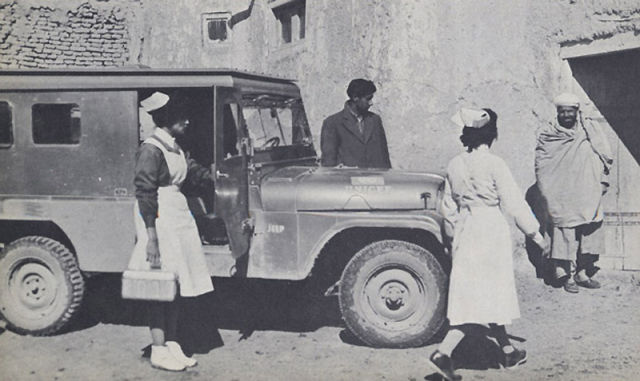
"Hundreds of Afghan youngsters take active part in Scout programs."
Afghanistan once had Boy Scouts and Girl Scouts. In the 1950s and '60s, such programs were very similar to their counterparts in the United States, with students in elementary and middle schools learning about nature trails, camping, and public safety. But scouting troops disappeared entirely after the Soviet invasions in the late 1970s.
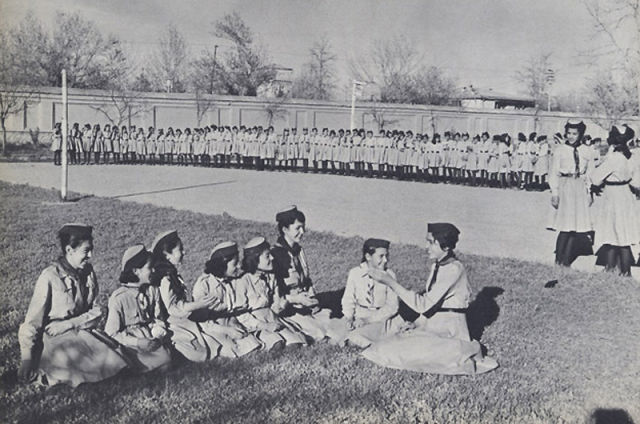
"Park Cinema, like many others, provides the needed entertainment."
This movie theater was located near where I once lived, and we could even see Hollywood movies there. (I remember seeing Spartacus, The FBI Story, and The Dirty Dozen.)
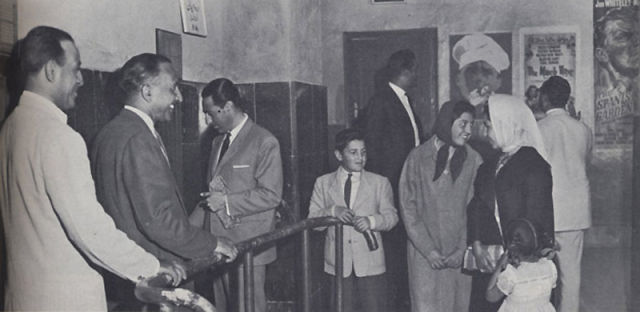
"Mothers and children at a city playground."
I also remember a playground a few hundred yards away from the theater, where mothers used to take their children to play. Now, only men loiter in the city parks; it is unsafe to bring children outside.
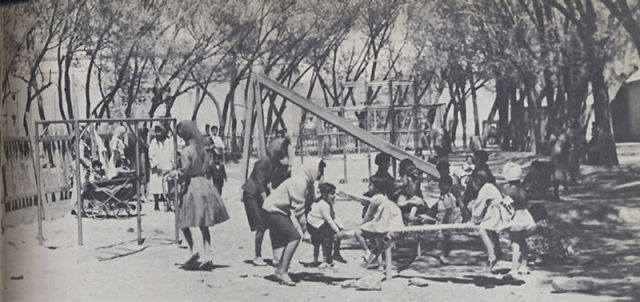
"Skilled workers like these press operators are building new standards for themselves and their country."
Light and medium industry, like this metal shop in the Kabul suburbs, once held great promise for Afghanistan's economy. But today, how could you run such an operation without ample electricity? Now there are only small shops, people who work at home -- no major industrial centers. Currently, Afghanistan's chief export is opium.
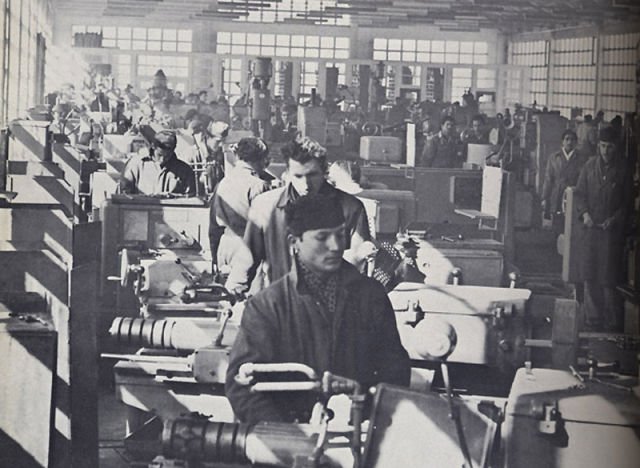
"Sarobi hydro-power plant on Kabul River is one of the country's foremost power stations."
With German assistance, Afghanistan built its first large hydropower station, pictured here, in the early 1950s. At the time, it was state of the art. It is still in operation, but unfortunately, in the last eight years, Afghanistan's government has not been able to build a single large power plant of any kind. The only sizable accomplishment has been the expansion of a transport line to Uzbekistan so that power can be imported from the north.
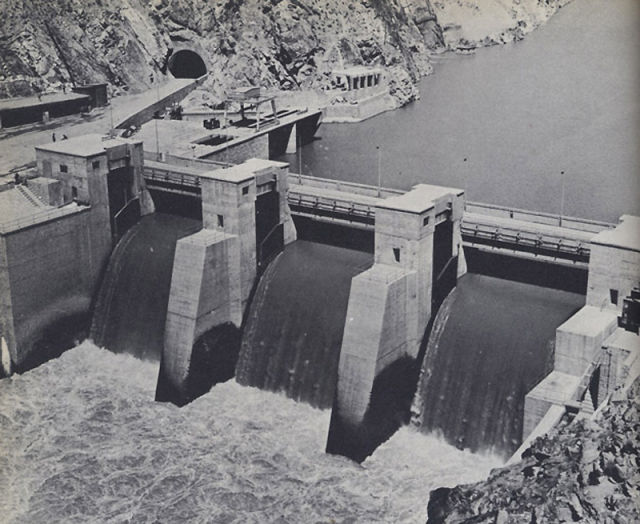
"Gulbahar Textile Plant is one of the most modern in Asia."
When I was growing up, Afghanistan did have medium and light industry, such as the textile factory pictured here. There was a sense then that Afghanistan had a bright future -- its economy was growing, its industry on par with other countries in the region. Back then, most of the cotton processed in a plant like this was grown locally. But three decades of war have destroyed industry and the supply chain.
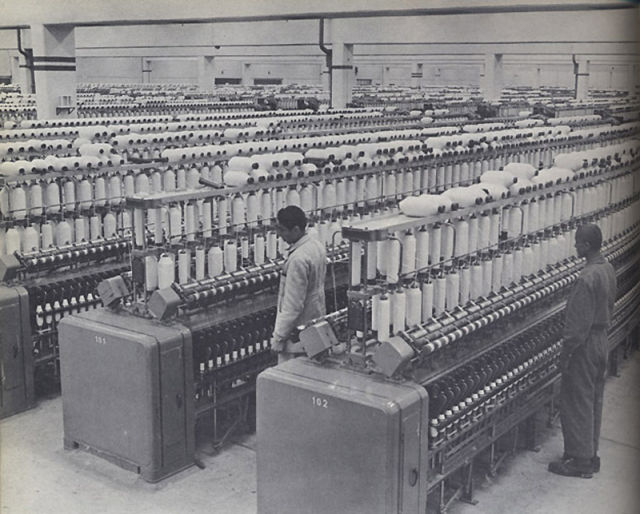
"Kabul is served by an up-to-date transportation system."
Compared with the 1950s and '60s, fewer women work outside the home, and their outfits are much more conservative than what you see here.
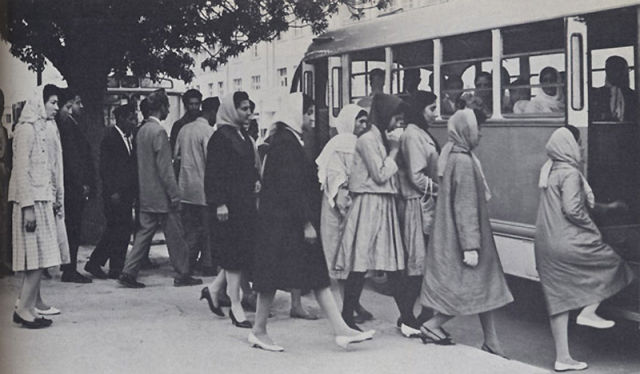
"Central control panel at Radio Kabul transmitter. Transmitter can be heard as far distant as South Africa and Indonesia."
If you flipped through the radio dial in the 1960s, you would hear broadcasts of world news, local news, music programs, funny skits, political discourse, maybe an art program, a children's show. Radio Kabul, a state-run station whose old offices are pictured here, was launched in the 1930s.
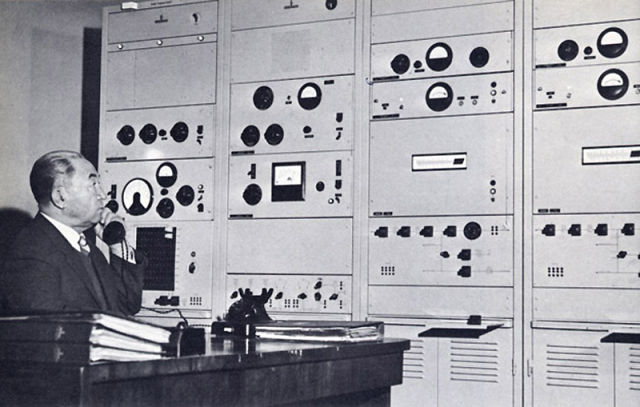
"Recording room pre-records many interviews, special service programs for delayed broadcast."
Modern Afghanistan actually has a greater number of private radio stations, as well as broadcast and satellite television shows. This is one bright spot. But access to radio and TV depends on electricity, and so in a practical sense, the audience is therefore limited. Only the most well-to-do families have private generators to ensure uninterrupted electricity to power electrical devices.
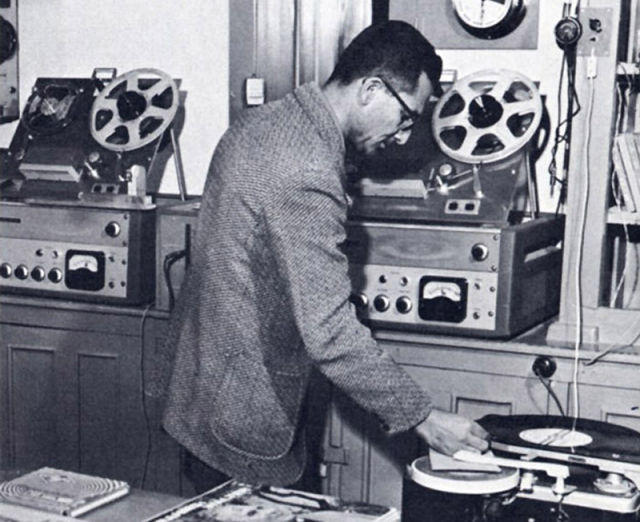
"International trade fair at Kabul."
During the annual commemoration of Afghanistan's independence, Kabul was lit up at night in late August and early September for nine evenings in the early 1960s. Now the city is dark. Even driving at night gives an eerie feeling. There are hardly any lights on; the streets are desolate, and there is no night life.
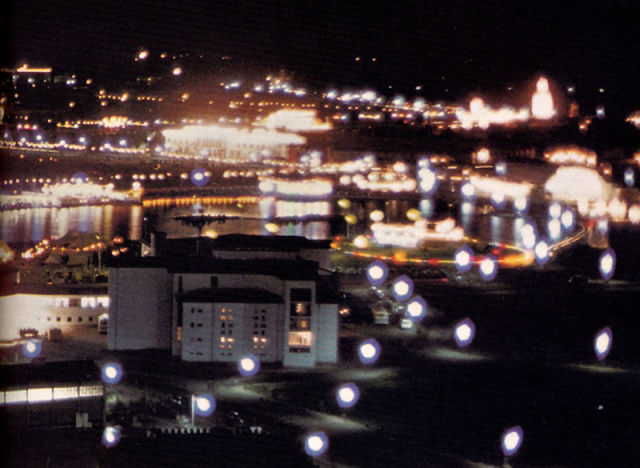
"Textile store window display."
Clothing boutiques like these were a familiar feature in Kabul during my childhood.
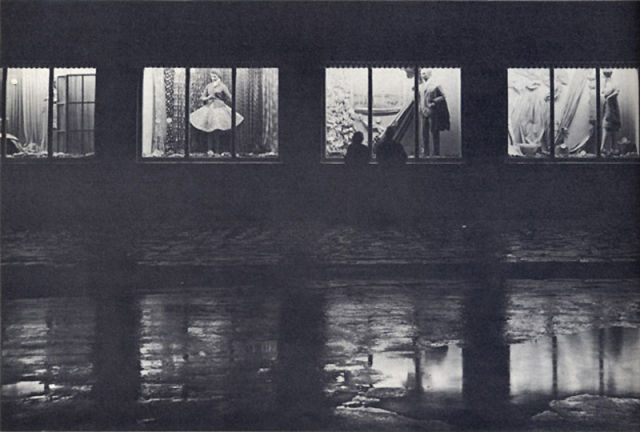
"Phonograph record store."
So, too, were record stores, bringing the rhythm and energy of the Western world to Kabul teenagers.
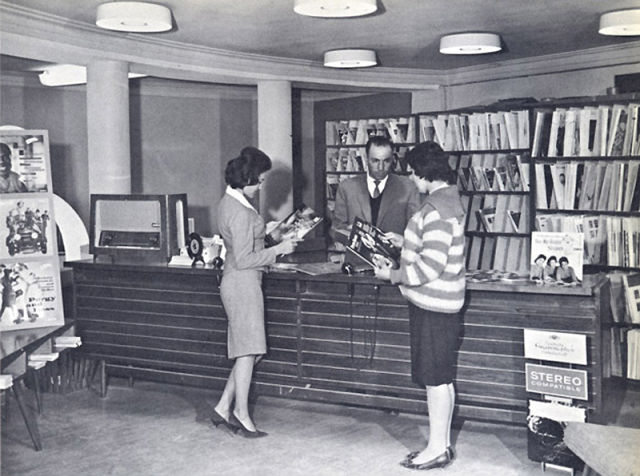
"Furniture display room."
Today, furniture stores like this one are a rarity. Most furniture is manufactured outside Afghanistan, and only a small percentage of Afghans now have even simple furniture like this in their homes.
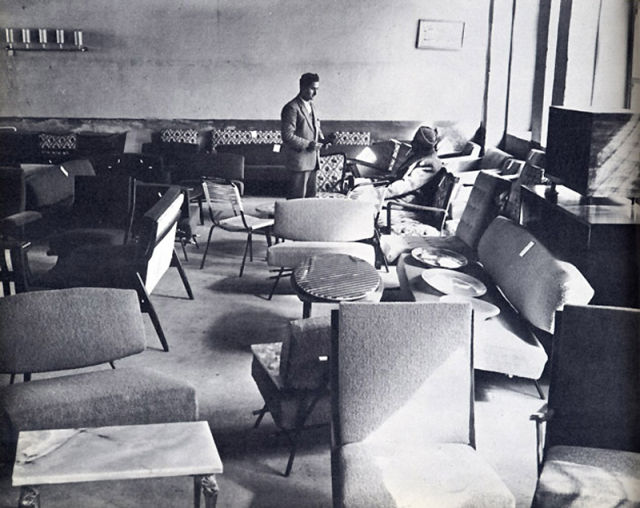
"Fresh fruit bazaar."
When I visit Kabul today, it is only the fruit bazaars that still look the same.
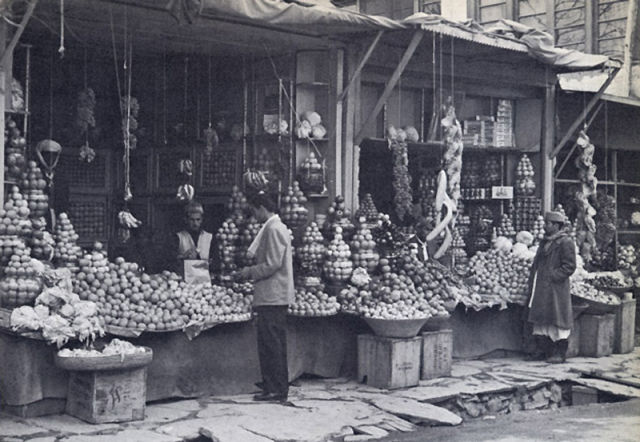
"Cabinet in session." The education level of Afghanistan's cabinet today is far less than it was 50 years ago, when this photo was taken. Back then, most high-ranking government officials would have had master's or doctoral degrees. Western dress was the norm. These days, government meetings in Kabul are conducted among men, many with long beards, big turbans, and traditional garb.
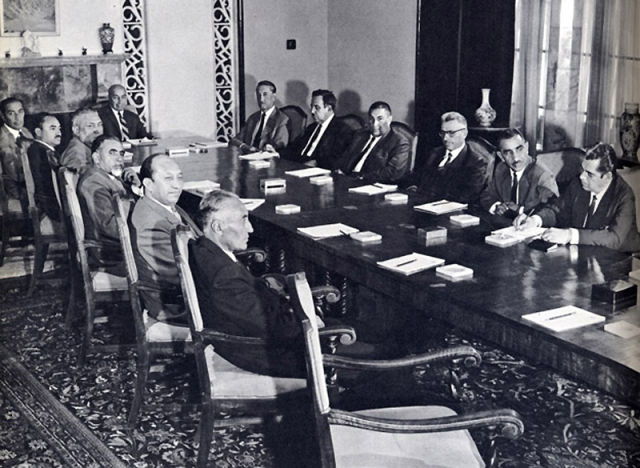
"In the absence of dependable international peace, national defense plays an important role in the affairs of the nation."
Afghanistan's once strong and functional defensive forces are today only a memory. After the Soviets left, Pakistan was instrumental in destroying the country's armed services. Since the 1990s civil war, the subsequent Taliban takeover, and the U.S.-led intervention, domestic security forces have proved extremely difficult to build, even as security remains a top concern.
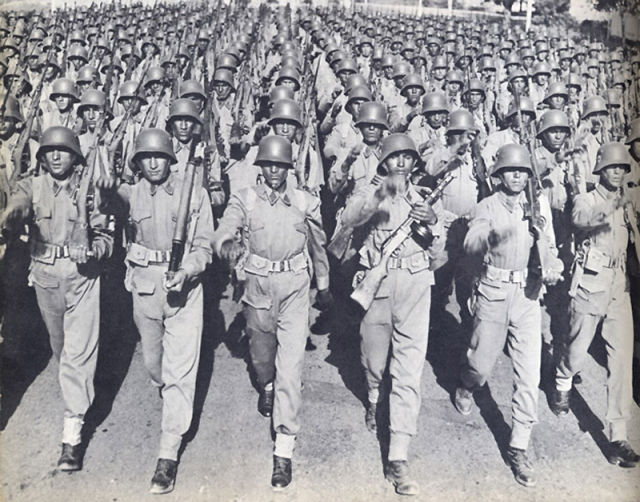
Source



























No, soviets destroy it in 80's
News flash ass hole, it was destroyed long before the USA showed up. Afghanistan had a long history of internal strife dating back to the to the 1960's. The former Soviet Union spent 9 years there trying to bring it under control.
The problem was both the US and the Soviet Union wanted a government in place that would support their interests in the region.
The US and the SU would throw money, weapons and support to anyone who would attempt a coup. Add on top of that Muslim extremest who want to over throw the government and you have a powder keg.
Afghanistan's problems where created by their own government and people. The US and the former USSR just aggravated it.
So before you go running your mouth go learn something. Or go back to mamas basement and snort some more blow
This is a good example of the world's mentality against the US. It is truly awesome to behold. No matter the situation, no matter how screwed a culture is or how ineffectual their country behaves, the US will ALWAYS be blamed for the worlds problems. Instead of these people examining their own issues its easier just to blame those "evil yanks". lol
It makes me sick to realize how many blind people there are in the world. Just pass the buck, I guess.
i have no love for the USA but i have to agree with ya. The US didnt go there and fuck it up. it was fucked up since god knows when. even way back in the 19th century
they are too tribal.